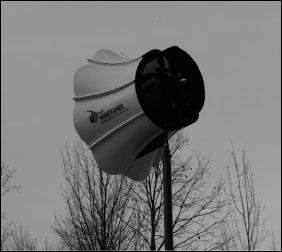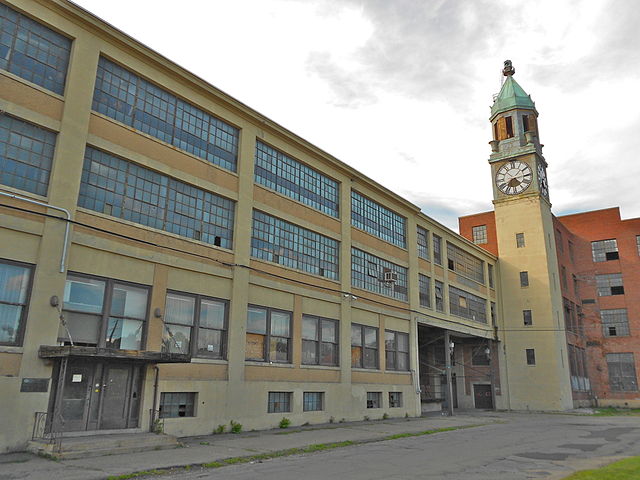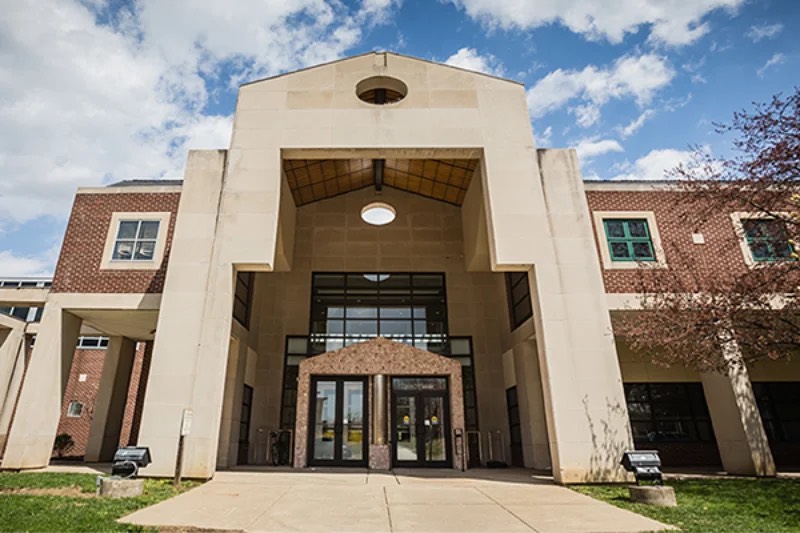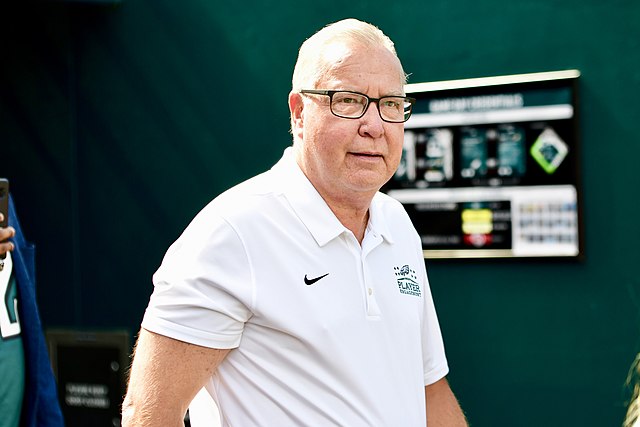
Elysabethe Brown
News Editor
Most Marywood students as well as faculty, visitors, and Scranton residents have noticed the large cone-shaped structure located behind the Mellow Center on the Marywood University Campus. The Wind Turbine, purchased from Wind Tamer, is a wind mill that helps power the lights in the Aquatics Center, and aligns with Marywood’s commitment to sustainable design.
According to powernatuarally.org a residential scale wind mill that could partially power a house would need to generate 50 kilowatts of power. Although Marywood’s windmill has a cone-shaped design, allowing it to run on less wind then a normal wind mill, it generates only 4 kilowatts. “It depends on the wind velocity – it would probably power 1% [of the lights in the aquatics centers],” said Wendy Yankelitis, Director of Buildings and Grounds.
The Wind Turbine cost the school $30,000 and will take about 15-20 years to make back in energy savings. “That’s not the main reason we put it in. We want to put the right step forward,” said Yankelitis. Ms. Yankelitis explains that the wind turbine is only used to power a little bit of energy, and while the university is thinking about buying more wind mills, they do purchase another 14% of power from Wind Powered Energy from PPL.
“We purchase the wind power, which is the right thing to do,” says Yankelitis, despite the higher costs. However, the wind turbine isn’t the only way that the university is using sustainable energy. The Architecture building uses a geothermal system which brings mine water up to a chilled beam that air conditions the first floor of the building. “We call this ‘free cool- ing,’” explains Yankelitis.
The water is then sent back down to the ground at a warmer temperature and recirculates back up to the beam at a cooler temperature. Ms.Yankelitis goes on to explain that the university has started to collect rain water, which is used in the bathrooms at the School of Architecture. “Daylight harvesting” is another way Marywood keeps its commitment to sustainable energy.
“When we build new buildings we pay a lot of attention to where the sun comes up and goes down so that we can maximize the sun that enters the building,” says Yankelitis. By doing this you can use less electrically powered lights. In many cases, the buildings around campus have light sensors so when it gets darker outside the lights will come on inside and when it gets lighter outside the lights will get darker inside.”
Lastly, Ms.Yankelitis adds that the university always tries to use sustainable materials in projects whether it is using recyclable materials in desks to choosing between bamboo and hard wood.










